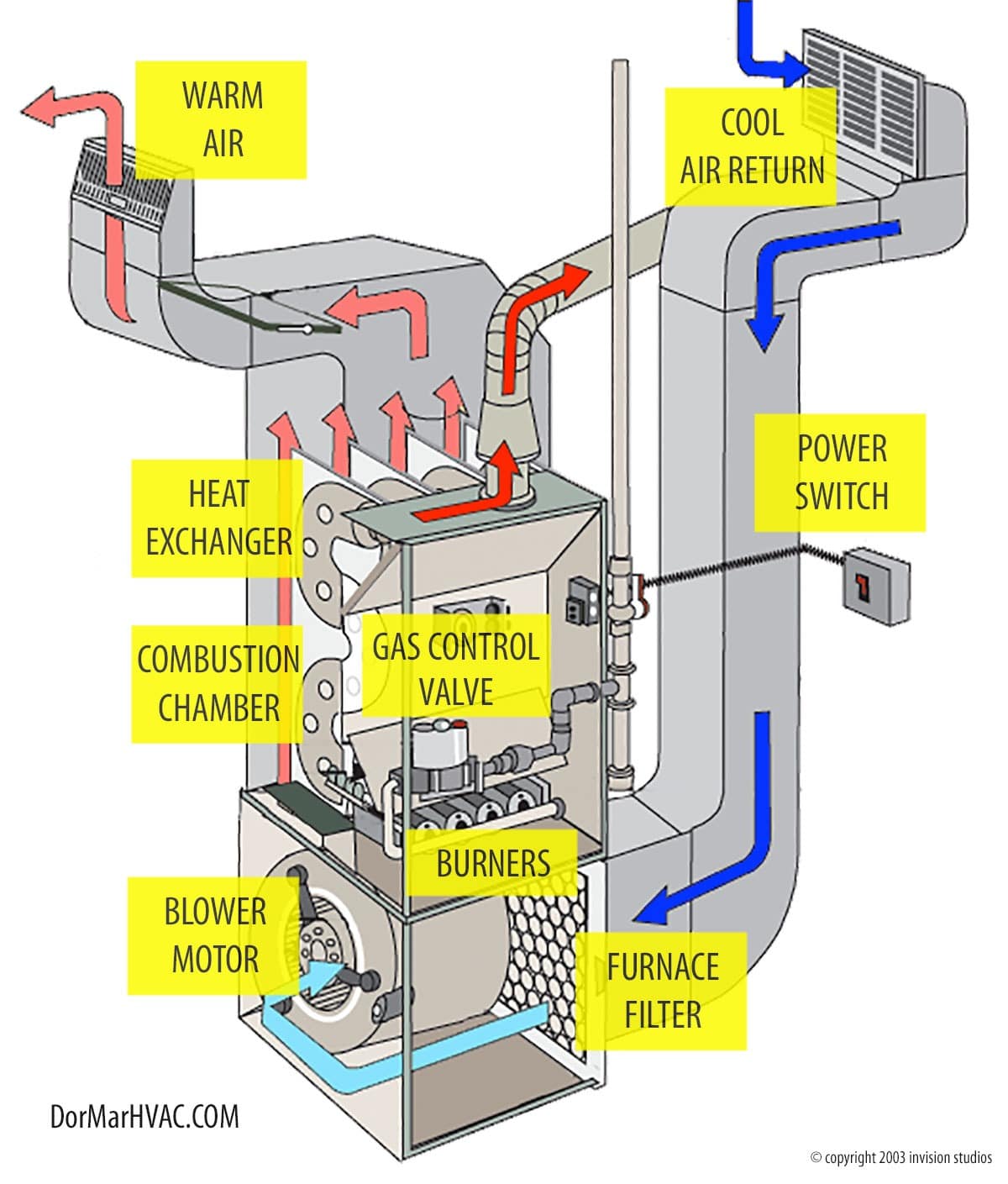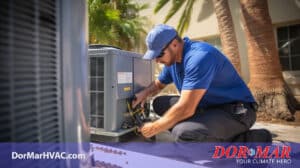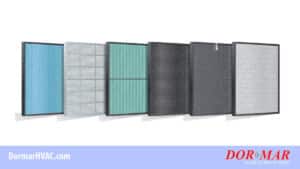Although furnaces can differ from model to model, they all operate on similar principles. In this post, we explain in general principles how a forced air furnace works and describe potential troubles you may encounter with your furnace.
The heating capacity of a furnace is measured using the British Thermal Unit (BTU). Most furnaces are rated between 40,000 and 130,000 BTU.
Forced air furnaces can be installed to send heated air up, down, or sideways to accommodate the space in which the furnace is to be installed. Gas burners, fueled by either natural gas or propane, are used to generate the heat.
Airflow Systems
Modern gas furnaces have two separate airflow systems which operate while the furnace is running.
- The first system uses a draft inducer fan motor to draw air into the burner assembly. The air allows the burners to warm the heat exchanger. The air within the burner assembly is then exhausted to outside the home, which is necessary since this air contains toxic fumes, such as carbon monoxide.
- The second air system uses a blower fan to draw air through the return vent, blow it past the heat exchanger, and force it through the home’s venting. The room air is then drawn back through the return, and the air flow cycle continues. Once the room air has warmed sufficiently, the wall thermostat signals the furnace to turn off until the room temperature decreases.
This process can be broken down into four main factors:
- Temperature control
- Ignition
- Combustion
- Air circulation
Temperature Control
The temperature in a home is regulated by the thermostat installed on your living room wall. The thermostat can receive power from the control board in the furnace, or by its own batteries. The thermostat is usually installed in a central location in the home, is positioned at eye level, and located away from direct sunlight to ensure proper temperature management. When the thermostat detects a lower temperature in the surrounding air, it switches on the heat circuit on the furnace control board, which then begins the ignition process.
Ignition
When a furnace’s power switch is turned on, and the thermostat determines heat is needed, the furnace goes through a timed ignition sequence. The sequence begins with the control board sending 120 volts of alternating current (AC) to the draft inducer fan motor. The inducer fan motor draws air into the burner assembly, which may be the air surrounding the furnace, or fresh outside air supplied by a pipe. Once the fan reaches its maximum speed, a vacuum switch is closed, which ensures that gas will not enter the furnace unless the toxic fumes can be exhausted. If the inducer motor does not turn on, or runs too slow, the vacuum switch will not close, and ignition sequence will stall.
Once the vacuum switch is closed, 24 volts will travel through the switch and one or more limit switches, allowing the control board to continue startup. The control board now sends 120 volts to a “glow-bar” style ignitor, depending on the model and age of the furnace. A defective ignitor will halt the ignition sequence, and prevent the furnace from heating. If you experience this problem, we can test a “glow-bar” style ignitor for continuity to help determine if the part is functioning or not. (Continuity means that electricity is flowing through the ignitor properly)
Some furnace models will use a spark ignitor, which also receive voltage from the control board. The amount of voltage is greatly increased, and is pulsed to create a spark.
Combustion
After a short time, the control board will send 24 volts to the gas valve to open it, allowing gas to flow over the ignitor and establishing a flame. Once the gas is ignited, a flame sensor detects whether or not a flame is present. If the burners do not light, or will not stay lit, the flame sensor may need to be cleaned to ensure it can detect the flame; or, the sensor may need to be replaced if it’s too dirty. (A dirty flame sensor is one of our most common service calls.)
Mounted on the burners are one or more flame rollout limit switches that ensure the air is being drawn through the burners. If the inducer fan motor cannot draw enough air through the burners, the rollout limit switch will open, and the control board will shut off the voltage to the gas valve.
If the furnace is located in a closet or another cramped area, the limited available air may prevent the combustion process from working properly. Closet doors may need to be louvered, or space left at the bottom of the doors, to ensure proper air flow. (This type of issue is usually addressed when equipment is first installed.)
Once the combustion process is complete, the control board sends 120 volts to the circulation blower fan motor. The blower fan draws air through the return vent, blows it past the heat exchanger, and forces it through the home’s venting. Over time, heat exchangers may crack, causing carbon monoxide to leak into the air being circulated throughout the home. Since carbon monoxide poisoning can result in illness or death, we recommend only experienced professionals repair or replace damaged heat exchangers. Under normal circumstances, the furnace will exhaust carbon monoxide through a flue or exhaust pipe to the outside of the home. If the flue pipe breaks, cracks or rusts, carbon monoxide will contaminate the air. To help keep you safe, a carbon monoxide detector should be installed near the bedrooms of your home, and its batteries checked regularly. If a leak is detected, the furnace should be shut off immediately.
Condensation often builds up in the exhaust pipe of high efficiency furnaces. For this reason, a condensate pump or floor drain is needed.
Air Circulation
The most important factor in efficient furnace operation is air circulation. To ensure proper air circulation, the furnace filter should be checked monthly and replaced if needed. There are several types of filters available, ranging from 1” to 5” thick. The filter can be installed into the slot in the return, or in an air cleaner.
Some homes may have an electronic air filter, which is powered by the furnace control board when the circulation blower fan turns on.
Mounted near the heat exchanger is a safety limit switch that monitors the air temperature. If the filter is clogged, or the circulation blower fan motor fails, the heat exchanger will overheat, the limit switch will open, and the control board will shut off voltage to the gas valve to prevent damage to the furnace.
The blower fan motor can run at multiple speeds to improve efficiency. Lower speeds are used when the furnace is heating, and higher speeds are used for air conditioning.
A noisy furnace is often the result of the draft inducer motor wearing out. If the circulation blower fan is causing the noise, the set screw on the blower wheel may have loosened, causing the wheel to wobble on the motor shaft. We fix this problem by tightening or replacing the screw, or replacing the blower wheel altogether.
Fortunately, Dor-Mar has a solution for any of the problems you may experiencing with your furnace.
Schedule an appointment for your Furnace Tune-Up with us today by using our online contact form, or call one of our seven neighborhood offices listed below. We pride ourselves on our customer-focused service, and our reviews show it.
NEWARK 740.345.6639 • COLUMBUS 614.238.6689 • DUBLIN 614.545.8939 • REYNOLDSBURG 614.365.1579 • WESTERVILLE 614.381.1540 • GROVE CITY 614.595.3098 • ZANESVILLE 740.454.2420
Dor-Mar…Your Climate Hero!







